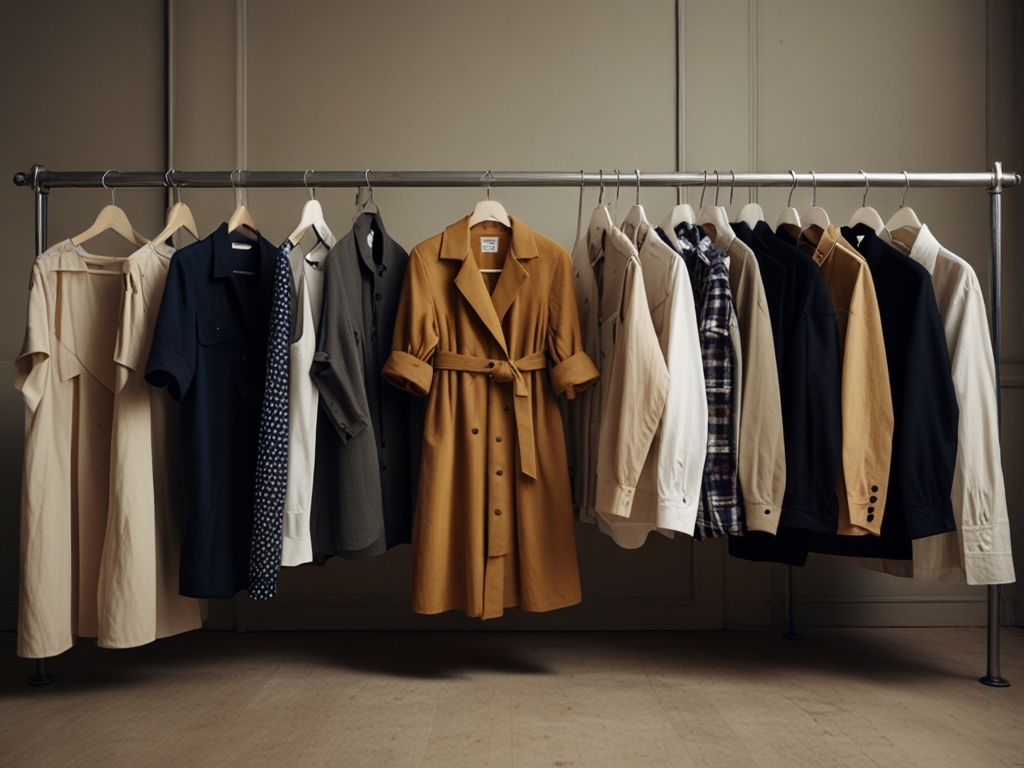Fashion is more than just clothes; it’s a big part of our culture. It’s a powerful cultural force that reflects society’s values, aspirations, and challenges. It shows what we think is important and what we want. Over time, fashion has changed a lot. It started as simple clothes to keep us warm and safe. Now, it’s a huge business with lots of creativity, money, and technology. But this big change has also made some problems.
The way we make clothes today, especially fast fashion, is bad for the Earth and the people who make them. It has been criticized for its massive environmental footprint and exploitative labor practices. To fix these problems, people came up with the idea of sustainable fashion. This means making clothes in a way that is good for the planet and for everyone involved. Let’s look back at the history of sustainable fashion and see how sustainable fashion is changing the future of clothes.
The Origins: Pre-Industrial Fashion
Before the Industrial Revolution, clothing was a precious artefact. Most people owned only a few garments, which were made to last. The materials used, such as wool, linen, and cotton, were sourced locally and were often produced in small quantities. Clothing was handmade, tailored to fit the individual, and passed down through generations. The process of making clothes was slow, labor-intensive, and involved a deep connection to the materials and their origins.
During this time, sustainability was more of a necessity than a choice. People had limited access to resources, so they made the most of what they had. Clothes were repaired, reused, and recycled long before these practices became buzzwords in the modern sustainable fashion movement. The concept of waste was almost nonexistent, as every scrap of fabric had a purpose.
The Industrial Revolution: When Fashion Got Fast
The 19th century rolled in with a bang, bringing with it the Industrial Revolution. Suddenly, clothes weren’t just made by hand anymore. Machines could churn out fabrics faster than you could say “cotton gin.” This was great news for people who were tired of wearing the same outfit for years. But for the planet? Not so much.
The Industrial Revolution in the 18th and 19th centuries marked a turning point in the history of fashion. It changed how clothes were made. It was like a big turning point in history. New machines made it possible to make clothes faster, cheaper, and easier. People started making lots and lots of clothes in factories. The work was done by people who didn’t need special skills. It wasn’t always easy or fun for the people working in the factories.
This period also saw the rise of consumerism. People started buying more clothes because they were cheaper. They didn’t care as much about how long the clothes would last. They wanted new clothes all the time. The focus shifted from quality and durability to quantity and fashion trends. This is where the idea of “fast fashion” started, even though we didn’t call it that back then.
The environmental impact of the Industrial Revolution was significant. The increased use of synthetic dyes, chemicals, and machinery led to pollution and the reduction of natural resources. The people who made the clothes, especially women and children, were treated badly. Even though the fashion business was doing well, it was also starting to hurt the planet in ways that we would see a lot of in the future.The Roaring
Twenties: When More Was More
Fast forward to the 1920s. The world had just come out of a nasty war and was ready to party. Fashion went wild. Flappers danced the night away in beaded dresses that probably took forever to make. The idea of “disposable fashion” started to take root. Why wear the same outfit twice when you could have a new one for every shindig?
This era set the stage for what we now call “fast fashion.” It wasn’t quite there yet, but the seeds were planted. People were getting used to the idea that clothes could be cheap, plentiful, and easily replaced.
The Post-War Boom: Plastic Fantastic
After World War II, things really kicked into high gear. New synthetic materials like polyester hit the scene. These fabrics were cheap to produce and didn’t wrinkle. Perfect for the modern, busy lifestyle! But there was a catch (isn’t there always?). These materials didn’t break down easily. That polyester shirt your grandpa bought in 1965? It’s probably still intact in a landfill somewhere.
The 1960s and 70s: Flower Power and Earth Day
As the world got groovier, some folks started to notice that all this consumption might not be great for Mother Earth. The first Earth Day was celebrated in 1970, and people began to think about the environment in new ways. Some hippies embraced natural fibers and handmade clothes. It wasn’t mainstream yet, but it was a start.
The 1980s: Excess All Areas
Just when it seemed like we might be heading in a greener direction, the 1980s hit like a ton of shoulder pads. Consumerism went into overdrive. People wanted more stuff, and they wanted it now. Fashion became faster and cheaper than ever. It was great for our wardrobes but not so hot for the planet.
The 1990s: Wake-Up Call
As we approached the new millennium, some uncomfortable truths started to surface. Reports of sweatshop conditions in clothing factories made headlines. People began to ask questions about where their clothes came from and who made them. It wasn’t just about the environment anymore – the human cost of fast fashion was becoming clear.
The early 2000s: Green Is the New Black
With the turn of the century came a new awareness. Organic cotton started to make appearances in mainstream stores. Celebrities like Stella McCartney began championing eco-friendly fashion. It wasn’t perfect, but it was progress.
2013: The Rana Plaza Disaster
Sometimes it takes a tragedy to spark real change. In 2013, the Rana Plaza garment factory in Bangladesh collapsed, killing over 1,000 workers. It was a wake-up call heard around the world. Suddenly, the true cost of cheap fashion was impossible to ignore.
This disaster led to the creation of Fashion Revolution, a global movement calling for greater transparency in the fashion supply chain. People started asking, “Who made my clothes?” It wasn’t just about looking good anymore – it was about feeling good about what you wear.
The Birth of Environmental Awareness: The 20th Century
People started to care more about the planet in the 20th century. A book called “Silent Spring” was written by Rachel Carson in 1962 and talked about how bad pesticides were for the Earth. This helped people realize that how we make things can hurt our planet. They started to ask questions about how different businesses, like the fashion industry, were affecting the Earth.
In the 1960s and 1970s, people wanted to live a different way. They wanted to be more natural and sustainable. So, they started wearing clothes made from natural things like hemp and organic cotton. This era also saw the rise of thrift shopping and the idea of “making do” with what one had. They also liked buying used clothes and making their own clothes instead of buying new ones. This was a way to say no to the wasteful way that people were buying and throwing away things.
However, It wasn’t until the late 1980s and early 1990s that people started thinking seriously about the concept of sustainable fashion. They were making clothes in a way that was good for the planet. Designers and companies started trying to use eco-friendly materials and make clothes in a fair way. This was when the idea of “green” fashion started. It was about making clothes that didn’t hurt the Earth and that were made in a way that was good for the people who made them.
Where Are We Now?
So, here we are in 2024. Sustainable fashion isn’t just a trend anymore – it’s becoming the new normal. Big brands are setting ambitious sustainability goals. Small, eco-friendly labels are popping up left and right. And consumers? We’re asking more questions and demanding better answers.
But let’s be real – we’ve still got a long way to go. Fast fashion hasn’t disappeared overnight. There’s still tons of waste, exploitation, and environmental damage in the industry. But the tide is turning.
More and more people are choosing quality over quantity. They’re investing in pieces that last, repairing clothes instead of tossing them, and thinking twice before buying something new. It’s not about being perfect – it’s about making better choices, one outfit at a time.
The Future of Fashion: What’s Next?
So, what’s on the horizon for sustainable fashion? Get ready for some wild ideas:
- Clothes that grow with you: Imagine a jacket that expands as your kid grows. It’s not science fiction – some designers are already working on it.
- Self-cleaning fabrics: Hate doing laundry? Scientists are developing materials that clean themselves. Your favorite shirt might soon be able to shake off stains all by itself.
- Clothes made by… algae? Yep, you read that right. Some innovative folks are experimenting with using algae to create sustainable textiles. It’s not just green fashion – it’s literally green.
- Digital fashion: Why buy physical clothes when you can rock a digital outfit on social media? It sounds crazy, but digital-only fashion is already a thing. No waste, endless possibilities.
- Clothes that capture carbon: Imagine if your t-shirt could help clean the air while you wear it. Some researchers are working on fabrics that can absorb carbon dioxide. Talk about fashion with a purpose.
The Takeaway
The history of sustainable fashion is a bit like that drawer of mismatched socks we all have – it’s messy, complicated, and full of surprises. We’ve come a long way from the days when “eco-friendly” meant scratchy hemp shirts and birkenstocks (not that there’s anything wrong with birkenstocks, mind you).
Today, sustainable fashion can be chic, innovative, and even high-tech. It’s not just about what we wear, but how we think about clothes. It’s about valuing the people who make our clothes, the resources that go into them, and the impact they have on our planet.
So, next time you’re about to impulse-buy that cute top you’ll probably wear once, pause for a moment. Think about where it came from, who made it, and where it’ll end up. Maybe you’ll still buy it – and that’s okay. But maybe, just maybe, you’ll decide to raid your bestie’s closet instead, or give that old sweater a new lease on life with some creative mending.
Remember, every small choice adds up. We might not be able to solve all the world’s problems with our wardrobes, but hey – looking good while trying to save the planet? That’s a trend we can all get behind.
Now, if you’ll excuse me, I’m off to see if I can turn this pile of old jeans into a stylish new bag. Wish me luck!

